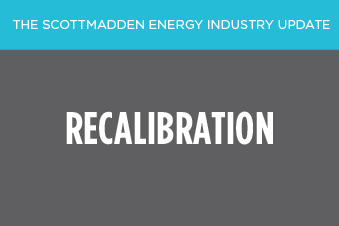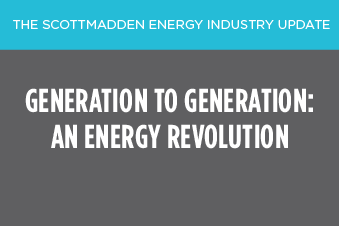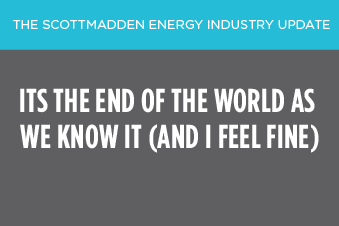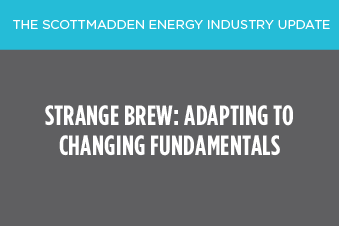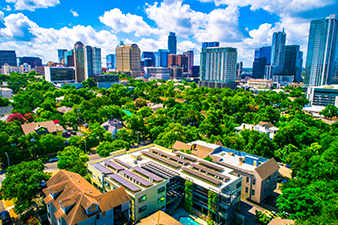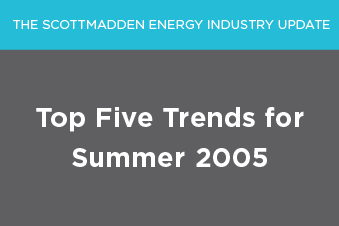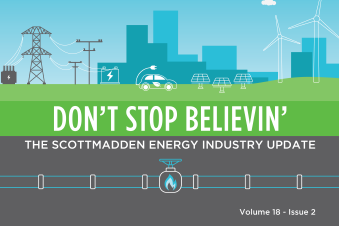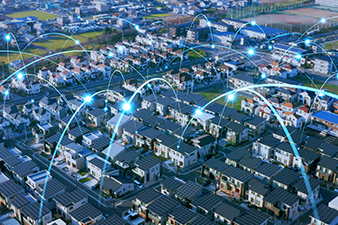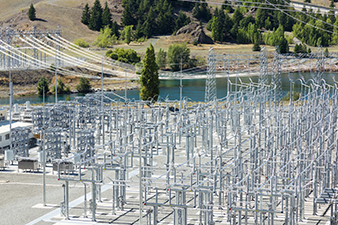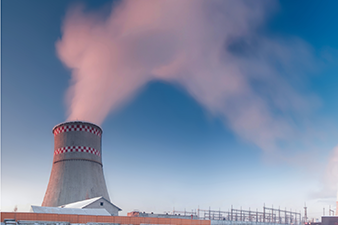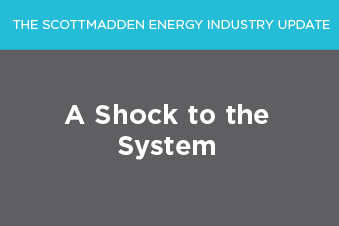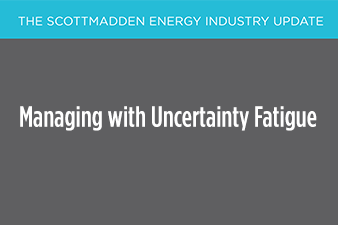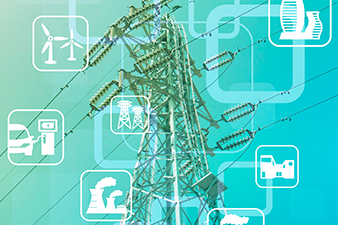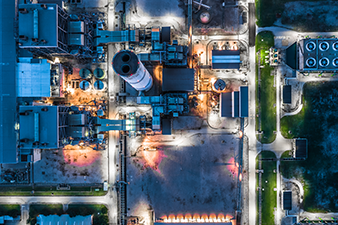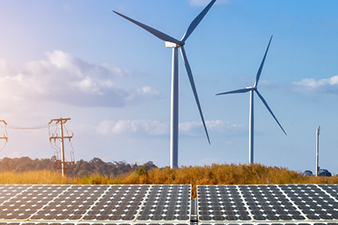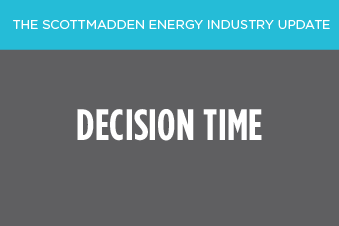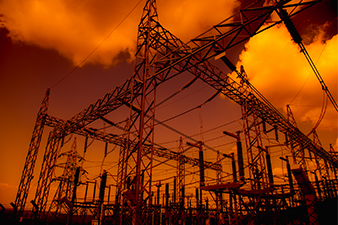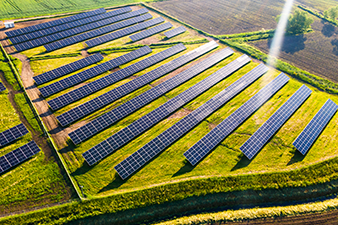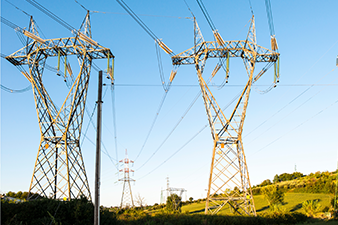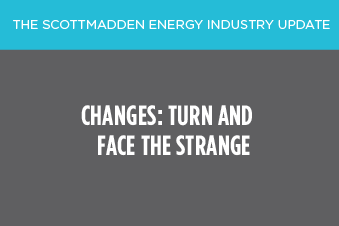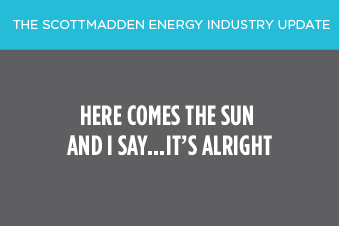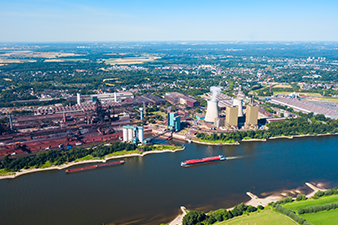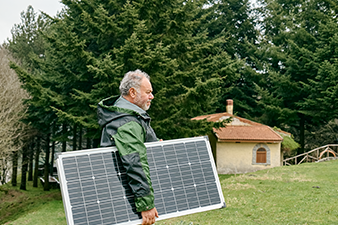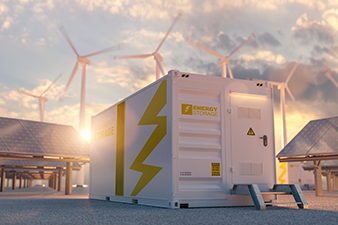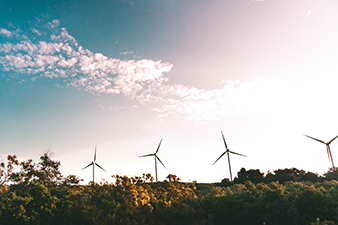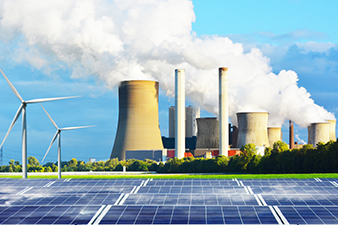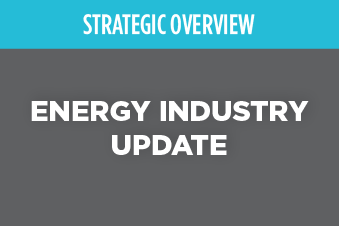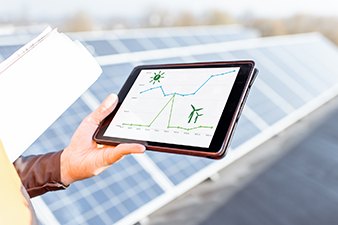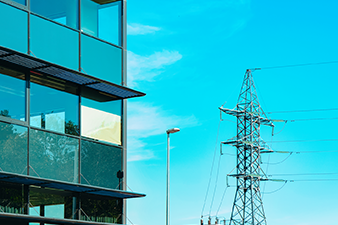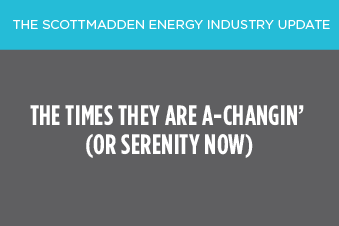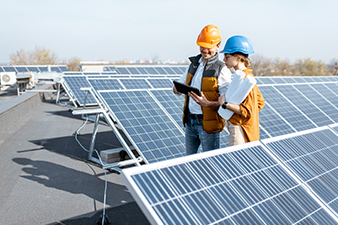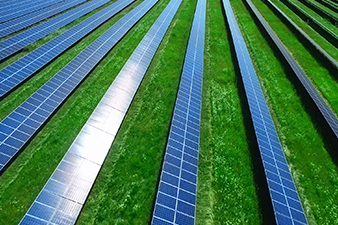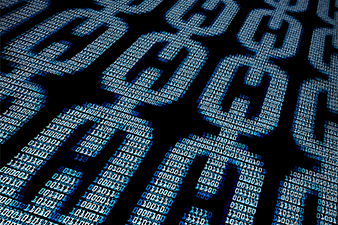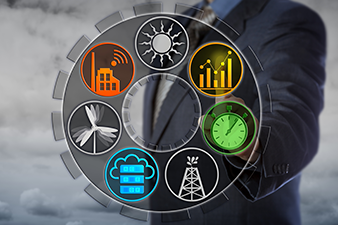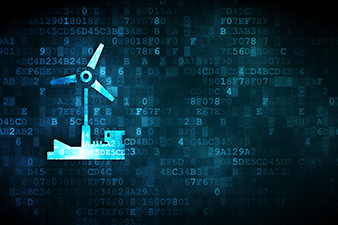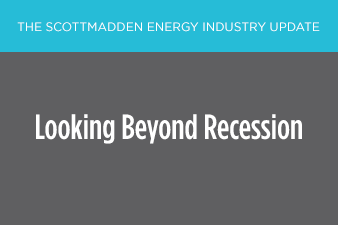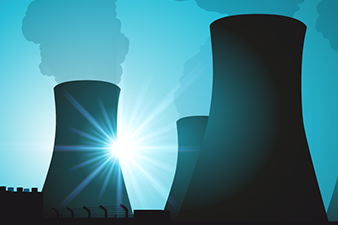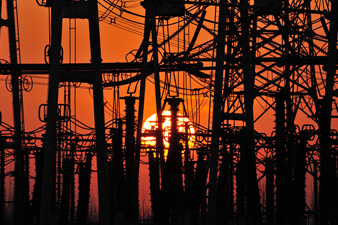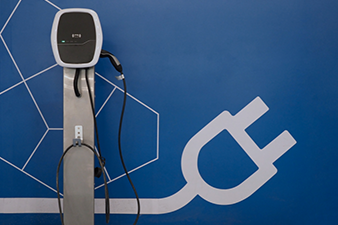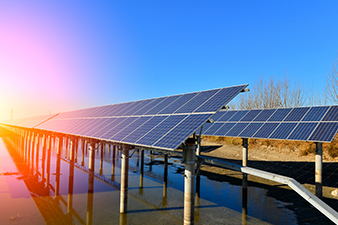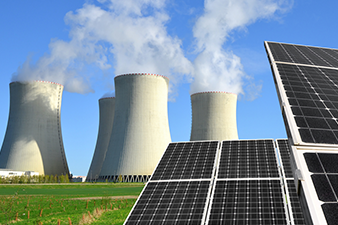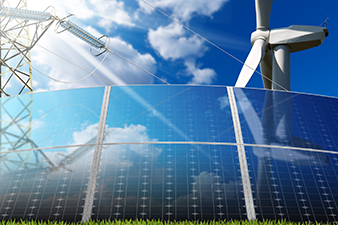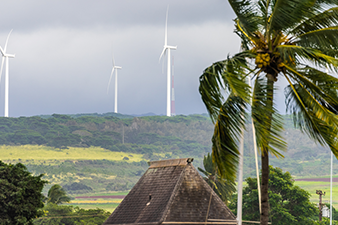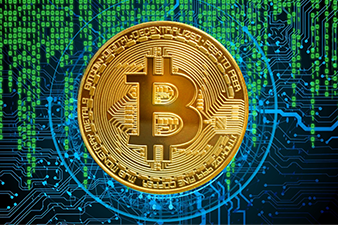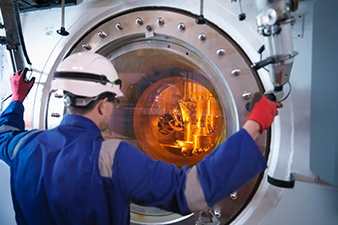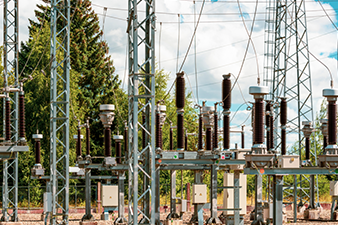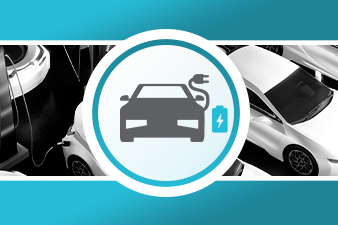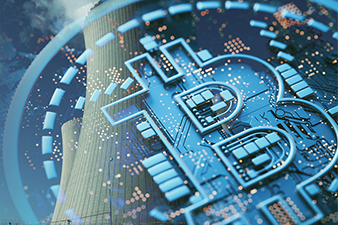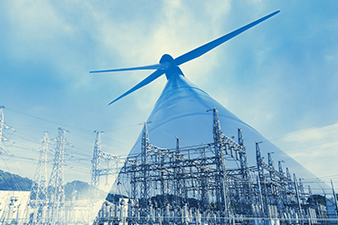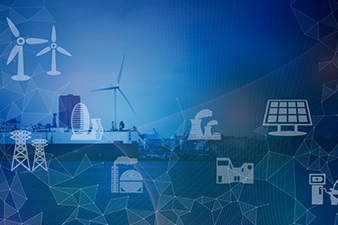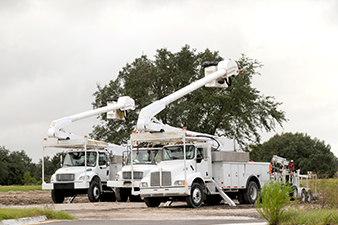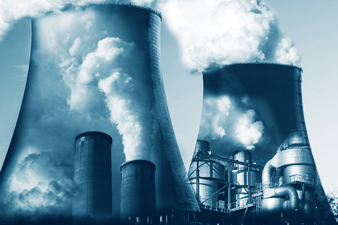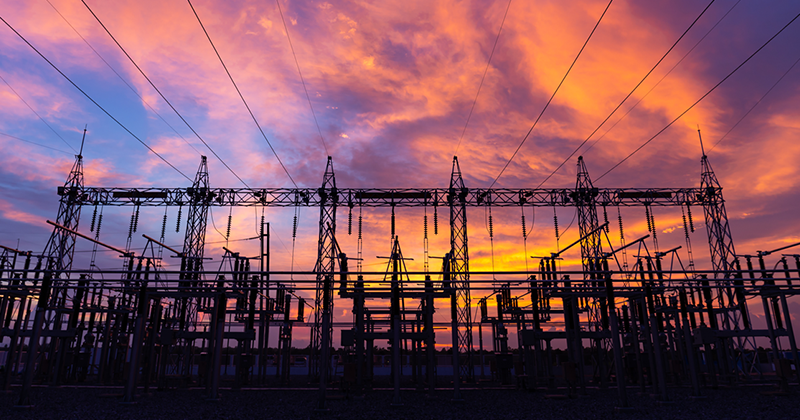
Introduction
There are a handful of states that can be counted on to lead change in our nation’s electric industry. For anyone interested in the progress of grid modernization, Illinois is certainly a place to look. Through a series of forward-thinking legislative pieces beginning with the Electric Customer Choice and Rate Relief Law in 1997, Illinois has positioned itself at the forefront of advancements in the industry.
In June 2017, ScottMadden and Smart Electric Power Alliance (SEPA) took a close look at Illinois in the article, “51st State Perspectives: DERs Are Coming and Illinois Is Ready for Them.”
| Table 1: Snapshot of the Illinois
Electricity Market Structure |
|
| Service Territory | Mixed (urban and rural) |
| Investor-Owned Utilities | 90% investor-owned utility
21% ComEd 69% Ameren |
| DER Penetration | Low |
| Utility Structure | Wires only (T&D) |
| Wholesale Market | Organized markets:
PJM and MISO |
| Retail Market | Fully deregulated |
| Renewable Policy | RPS: 25% by 2025 |
What we found was a state setting the stage for a proliferation of renewables and other distributed generation in a deliberate and thoughtful manner.
At that time, we also looked forward to continued progress through a number of initiatives, including substantial investment in grid modernization, reliability and other improvements under performance-based rate mechanisms, new renewables funding programs designed to accelerate development, and the newly established NextGrid Utility of the Future Study.
Today, we are taking a fresh look at Illinois to see what changes and accomplishments have occurred since that time.
Background
Over the past two decades, several pieces of energy-focused legislation have driven a transformation of the electric industry in Illinois.
The Electric Customer Choice and Rate Relief Law in 1997 deregulated the state’s two investor-owned utilities, Ameren Illinois (Ameren) and Commonwealth Edison (ComEd). The Customer Choice law provided for a multi-year transition to retail competition and established one of the largest retail electric choice programs in existence today. This market structure has served Illinois well, with average retail energy costs falling over the past 20 years relative to other states—from among the highest in the Midwest to among the lowest.[1]
In 2011, the Energy Infrastructure Modernization Act (EIMA) was passed. The EIMA was designed to improve reliability and drive modernization of the grid with up to $3.3 billion in smart meter and other infrastructure spending by Ameren and ComEd. Along with this infrastructure funding, EIMA required adoption of performance-based rates to determine the return on equity (ROE) rate, which is reset annually.
The Future Energy Jobs Act (FEJA), passed in 2016, was designed to expand energy efficiency and invigorate the state’s renewable energy industry. Illinois’ renewable portfolio standard (RPS), which was passed in 2007, required that 25% of retail generation be from renewables by 2025. However, the state has struggled to stay on track with interim targets. The FEJA put into place various rules and mechanisms designed to direct funding to new renewables construction in the state.
Energy Infrastructure Modernization Act (EIMA)
EIMA authorized up to $3.3 billion in funding for advanced metering infrastructure (AMI) and other grid investments by Ameren ($648 million) and ComEd ($2.6 billion) and established a performance-based mechanism for ROE rate determination. High among the objectives of EIMA was to provide AMI capable meters for the more than five million customers of Ameren and ComEd.
Both utilities are on track to achieve this objective. Ameren reported that it will complete AMI installation for all of its 1.25 million customers by the end of 2019.[2] ComEd had substantially completed its AMI installation for its four million customers at the end of 2018.[3] This advanced metering capability has already facilitated the introduction of time of use rates for Illinois customers. It also helps set the stage for data gathering and network communications, which will be critical as distributed resources expand.
Under EIMA, performance criteria included the requirement to meet certain metrics or lose part of the authorized ROE. Now, five years into the performance period, as of June 2018, Ameren and ComEd report they are exceeding improvement targets for each of the defined program metrics.
In particular, for the Systems Average Interruption Frequency Index (SAIFI) metric, both utilities have already achieved the 10-year 20% improvement target. For the Customer Average Interruption Duration Index (CAIDI) metric, both utilities have achieved in excess of 10% reduction toward the 15% 10-year improvement target.[4] [5]
The grid infrastructure upgrades funded under EIMA continue to drive improvement in the reliability experience for Illinois customers, including fewer interruptions and shorter interruption durations.
Future Energy Jobs Act (FEJA)
Renewables penetration in Illinois has long lagged the yearly targets established by the state’s RPS. Illinois passed an RPS in 2007, which required 25% of retail electricity sales be from renewable resources by the year 2025.[6] Despite the interim RPS target of 14.5% by 2019, the state is currently generating less than 7% from renewables.[7]
Illinois may have taken a major step toward compliance with approval of the Long-Term Renewable Resources Procurement Plan. The Plan, required under FEJA, was issued by the Illinois Power Agency (IPA) and approved in May 2018. While complex and multi-faceted, the intent of the Plan is to significantly increase the quantity of procured renewable energy credits (RECs) and to emphasize funding of new solar and wind projects in REC markets.
Key aspects of the Plan include:[8]
- RPS obligations will be phased out for alternative retail electric suppliers (ARES) by 2018–2019. They will be replaced by programs and procurements conducted by the IPA to cover the RPS obligations of all retail customers, not just those who remained on the utility default service.
- The IPA is directed to develop and implement an adjustable block program for photovoltaic distributed generation and community solar. Pricing under this program is to be set administratively by the IPA in order to create better predictability.
- There are rules and limitations designed to emphasize procurement of RECs from new solar and wind projects.
- The Plan also describes the development of a community renewable generation program, allowing residential and business customers to participate even if they cannot host solar panels.
While still early, there are some indications that solar development activity in the state expanded significantly in the second half of 2018. According to the Solar Foundation’s annual National Solar Jobs Census, Illinois added 1,308 solar jobs in 2018, a 37% increase from the prior year. The state now has nearly 5,000 full-time solar jobs, giving it the 13th largest solar workforce in the United States.[9]
NextGrid Illinois Utility of the Future Study
Not satisfied with an impressive volume of grid modernization activity already underway, the Illinois Commerce Commission (ICC) initiated the NextGrid Study in March 2017. This 18-month Study was led by the University of Illinois at Champagne-Urbana and involved participants from the ICC, Ameren, ComEd, MISO, PJM, and numerous advocates and stakeholders.
One of the most broad-ranging and high-profile assessments of its kind, the NextGrid Study was organized into seven working groups, each focused on a key subject area for determining the industry’s future.
- New Technology Deployment and Grid Integration
- Metering, Data, and Communications
- Reliability, Resiliency, and Security
- Customer and Community Participation
- Electricity Markets
- Regulatory and Environmental Policy Issues
- Ratemaking
The Study’s results, which were released in December 2018, set the stage for future ICC rulemaking and perhaps another round of industry legislation. While the Study did not make specific recommendations, there were interesting pronouncements and perhaps clues to where Illinois will go next.
Among the issues highlighted were current deficiencies in communications networks, which would be expected to handle DER management services and the importance of compensating distributed generation on a locational basis. The lack of progress in Illinois in both electric vehicle-charging infrastructure and electric storage resources were identified as key weaknesses likely to hold back future progress. Additionally, risks associated with customer privacy, as AMI networks are built out and become digitized, were noted as was the need for rulemaking to protect customer data.[10] [11]
Retail Market Development
An area of grid modernization where Illinois could take action to improve performance is in residential participation in retail choice programs. The percentage of residential customers served by ARES has continued to decline. Total residential customers served by ARES fell to 1.77 million as of May 2018, down from 2.07 million in 2016, an annualized decline by more than 7.5% each year. As of May 2018, alternative providers serve only 59% of Ameren customers and 32% of ComEd’s customers.[12]
The NextGrid Study included discussion of reasons for this decline. Among these were an inability on the part of ARES to offer attractive savings relative to the standard utility service due to current market structure. Study participants also reported a lack of innovative customer offerings and consumer protection concerns as contributing factors.
Alternative provider service to non-residential customers as measured by electric usage has remained steady at 84%–85% in recent years. The number of alternative providers certified to serve retail customers in Illinois has risen. In the latest reporting, this number increased to 103 from 89.[13]
Renewables and DER Penetration
As noted earlier, progress in Illinois toward achieving the RPS requirement of 25% by the year 2025 has remained elusive. Policy changes under the Long-Term Renewable Resources Procurement Plan may be starting to accelerate renewables development in the state.
In addition, the Illinois legislature is considering the proposed Path to 100 Act, new legislation that expands Illinois’ renewable energy standards in order to drive new wind, solar, and storage development and bring the state to 100% clean energy.[14]
- Expand Illinois’ RPS from its current requirement of 25% renewable energy by 2025 to 40% renewables by 2030
- Drive procurement of an estimated 6,000 MW of new utility-scale solar, 6,500 MW of new wind power, 7,500 MW of new residential, commercial, and community-scale solar
- Identify opportunities to pair energy storage with renewable energy development and create a statewide study to eliminate barriers for energy storage
Conclusion
Illinois is among the top states to follow for advancements in grid modernization and how the many complex aspects of our electric system’s future will evolve. Our look back over the two years since publication of the article, “51st State Perspectives: DERs Are Coming and Illinois Is Ready for Them,” shows progress being made on many fronts.
- Investment in grid infrastructure is delivering the benefits of both advanced metering technology and improved reliability to customers.
- Changes to renewables procurement programs under the Long-Term Renewable Resources Procurement Plan appear to be accelerating solar development.
- Illinois is again pointing to the future with completion of the NextGrid Utility of the Future Study.
We continue to believe Illinois has laid an excellent foundation and is well-positioned for grid modernization and rising penetration of DERs and renewables. When DERs arrive, Illinois will be ready.
[1] NextGrid Illinois Utility of the Future Study, Illinois Commerce Commission, February 2019
[2] Ameren AMI Annual Update, April 2018
[3] ComEd AMI Annual Update, April 2018
[4] Ameren Multi-Year Performance Metrics – Annual Report 2018, June 1, 2018
[5] ComEd Multi-Year Performance Metrics – Annual Report 2018, June 1, 2018
Systems Average Interruption Frequency Index (SAIFI)
- Ameren: Baseline = 1.13 interruptions per customer vs. Year 5 performance = 0.83
- ComEd: Baseline = 0.998 interruptions per customer vs. Year 5 performance = 0.575
Customer Average Interruption Duration Index (CAIDI)
- Ameren: Baseline = 156 minutes per interruption vs. Year 5 performance = 139
- ComEd: Baseline = 92.9 minutes per interruption vs. Year 5 performance = 81.2
[6] https://www.energy.gov/savings/renewable-portfolio-standard-3
[7] https://www.eia.gov/state/analysis.php?sid=IL
[8] Illinois Power Agency’s Long-Term Renewable Resources Procurement Plan – Final and Approved, August 6, 2018
[9] Illinois Defies National Trend by Adding 1,300 Solar Jobs in 2018, February 13, 2019
[10] Breaking Down Illinois’ NextGrid Roadmap to a Grid Edge Future, GTM, January 17, 2019
[11] NextGrid Illinois Utility of the Future Study, Illinois Commerce Commission, February 2019
[12] ICC Office of Retail Market Development (ORMD), Annual Report to the Illinois General Assembly, May 2018
[13] ICC Office of Retail Market Development (ORMD), Annual Report to the Illinois General Assembly, May 2018
[14] Representative Will Davis Announces the “Path to 100 Act,” Moving Illinois to 100% Clean, Renewable Electricity, Associated Press, February 6, 2019


